Ijraset Journal For Research in Applied Science and Engineering Technology
- Home / Ijraset
- On This Page
- Abstract
- Introduction
- Conclusion
- References
- Copyright
Formulation and Evaluation of Nagarmotha Hair Oil
Authors: Miss. Patil Shivani Navnath, Prof. Shinde R. R., Dr. Hingane L. D.
DOI Link: https://doi.org/10.22214/ijraset.2021.39477
Certificate: View Certificate
Abstract
The Presenace study investigation oil isolation form cyperus rotundus and the chemical composition of essential oil of root\'s of Cyprus rotundus.In india it\'s commonly known as nagarmotha.and it belongs to the family cyperacea.the major chemical components of this herb are essential oils.flavonoids, terpenoids, sesauiterpenes, cyproten, cyperene, aselinene, rotundene, valencene, cyperol, gurjunene, transcalamenenene, cad\'Alene, cyperoutundone, mustskone, isocyperol, acyperone etc. Reserch studies have shown that it possesses various Pharmacological activity Such as diuretic,carmenative emmenagogue, anthelmintic, analgesic, anti-inflammatory, anti-dysentery, anti-rheumatic activities.an extensive review of the ancient traditional literature and madern research revealead that the drug has numerous therapeutic action. Several of which have been established scientifically, which may help the reserchers to set their minds for approaching the utility efficiency and potency of nagarmotha.
Introduction
I. INTRODUCTION
A. Cyperus Rotundus
Family — cypereceae
It also known as purple nutsedge or nutgrass is a common perennial weed with slender, scalycreaping, rhizomes,bulbous at the base and arising singly from the tubers which are about 1-3 cm long. The tubers are externally blackish in colour and raddish white inside with a characteristic odour. The stems grows to about 25 cm tall and the leves are linear, dark green and grooved on the upper surface.
Inflorescence are small with 2-4 bracts, consisting of tiny flowers with a red brown husk. The nut is three angled, oblong- ovate, yellow in colour and black when ripe. C.rotundus is indigenous to India. But are now found in tropical, subtropical and temperate regions.Cyperus rotundus is a multi-purpose plant widely used in traditional medicine around the world to treat stomach ailments, wounds, boils and blisters. A number of pharmacological and biological activities including anti-candida, anti-inflammatory, anti-dibetic, anti- diarrhoea, cytoprotetic, anti-mutagenic, anti-microbial anti- bacterial, anti-oxidants, cytotoxic and a poptotic, anti-pyretic and analgesic activities have been reported for this plant.
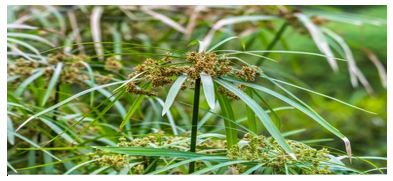
B. Taxonomical Classification
- Kingdom : Plantae
- Sub-kingdom : Tracheobionta
- Super division : Spermatophyta
- Division : Magnoliophyta
- Class : Liliopsida
- Subclass : Poales ( cyperales )
- Family : Cyperacae
- Genus : Cyperus
- Species : Rotundus
C. Benifits of Nagarmotha
- Nagarmotha controls hair fall associated with dandruff.
- Regular use of nagarmotha oil improve hair texture, adds shine and stimulates hair growth.
- Dandruff generally occurs due to an unbalance pitaa or kapha dosha.
- Nagarmotha or it's oil has pitta– kapha balancing properties which controls dandruff and removes excessive dryness.
- Nagarmotha helps to Control hair loss associated with dandruff.
- By effectively alleviating Stress, it also prevents hair fall and premature greying Of hair.
- Effective On split ends.
- Repairs damage hair.
- Stimulates hair growth.
- Provides Volume to hair.
- Treats and moisturizes dry scalp.
D. Discription of Nagarmotha
Roots
- Nagarmotha is a colonial plant exhibiting fibrous roots and usually grows to a height of 7–40cm.
- They reproduces by giving out tubers, basal bulbs, rhizomes and fibrous roots.
- This rhizomes in the Initial period are white and fleshly in nature with scaly leaves.
- It that later become wiry, fibrous and dark brown in colour.
- It's rhizomes is particularly valued for its oil.
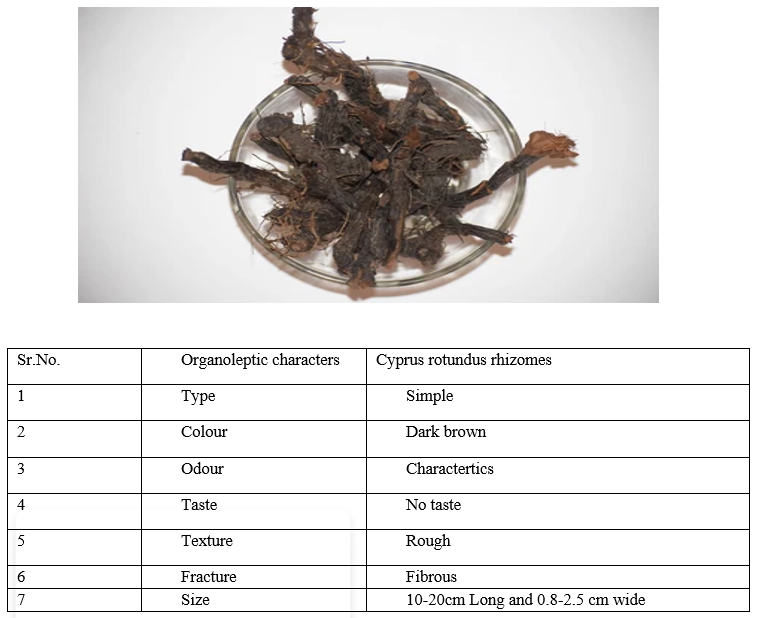

II. HERBS
A. Aloevera

Botanical name – Aloe barbadensis Miller
- Benefits
a. Aloevara acts as a great conditioners and leaves your hair fall smooth and shiny .
b. It promotes hair growth, prevent itching of the scalp, reduce dandruff and conditions your hair.
B. Bhringraj
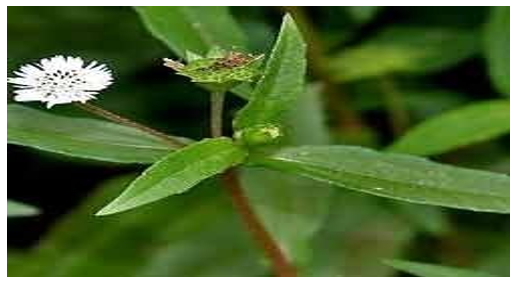
Botanical name – Eclipta Prostrata(Daisy)
- Benefits
a. Treats dandruff and dry scalp.
b. Treats baldness and helps in hair growth.
c. Prevents hair fall.
d. Promotes hair growth.
e. Prevents graying of hair.
f. Makes hair lustrous.
g. Repairs hair damage.
C. Almond
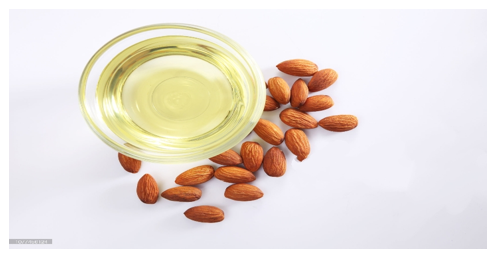
Botanical name – Prunus dulcis (rose)
- Benefits
a. Almonds are rich in magnesium and nutrients which promotes hair growth.
b. Almonds are preventing dandruff and hair damage.
c. Almond Provides sufficient nutrition to the hair Follicles that make the hair strands stronger , thus reducing hair fall.
d. Almonds good for hair fall control and hair conditioning.
e. Almonds are full of essential vitamins like vitamin A , vitamin e ,Vitamin B1 and B6 that helps in making your hair long and strong.
f. Enhance hair thickness and combats hair loss.
g. Seals vital nutrients into the hair.
h. To chake scalp infection and inflammation.
D. Jasmine
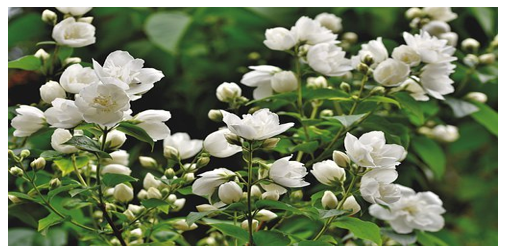
Botanical name – jasminum (olives)
- Benefits
a. There are many benefits of using Jasmine oil for hair.
b. Jasmine oil is good for Moisturizing dry and frizzy hair.
c. It also straightens hair, and its antimicrobial Properties are effective in treating lice and scalp infection.
d. Jasmine oil uses include moisturizing and healing dry skin.
e. For long and strong hair.
f. Treats scalp infection.
g. Fights hair lice.
h. Natural hair conditioner.
E. Amla
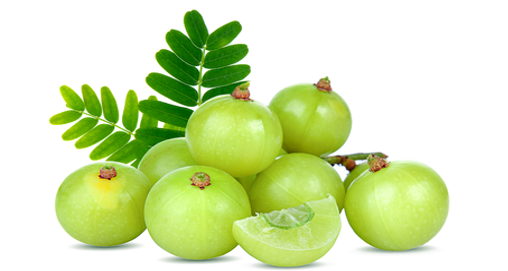
Botanical name – phyllanthus emblica linn (phyllanthaceae)
- Benefits
a. Strengthen the scalp and hair
b. Reduce premature pigment loss from hair,or greying.
c. Stimulate hair growth.
d. Prevent or treat dandruff and dry scalp.
e. Prevent or treat parasitic hair and scalp infection, like lice infections.
f. Reduce hair loss.
III. METHOD
Eligible participants ( n = 65) with anwanted axillary hair were assigned randomly to 1 of 3 study groups : topical C rotundus Oil (group 1), saline ( group 2), and Alexanderite leser ( group 3). Sixty petionts completed the entire study.
Three methods Where used to evaluate the results :
- Hair counts
- Observations of Independent Professionals
- Patients self assessments.
IV. FORMULATION OF NAGARMOTHA HAIR OIL
The various ingredients used in the formulation of Nagarmotha hair oil. Accurately weight dried root's of Nagarmotha root's and other herbs such as, aloe vera, Amla, almond oil, Bhringaraj, jasmin oil. Where grinded in the mixture and was mixed in 6 ml Of almond oil.The above content was boiled for 15 min.and was filtered through muslim cloth. The filtrate almond oil was added to make up the volume (6 ml). Finally small amount of colour and flavouring agents was added to the oil and it was placed in Umber colored bottle.

V. EVALUATION OF NAGARMOTHA OIL
A. Primary Skin Irritation Test
The institute has been cleared for the said biological evolution by the Animal Ethics Committee . Six healthy male rats , weighing 200-250 g , were selecte for the study. Each rat was caged individually ; food and water was provided to all these six rats during the test period of 24 hrs prior to the test .The hair from the back of each rat of 1 cm² was shaved and the sites were cleaned with sergical sprit. A quantity of 1ml ( 5% w/w) of the formulation HF1 , HF2, HF3, HF4, HF5 and HF6 was applied over the respective test sites . The test sites were observed for erythema and edema for 72 hrs after application of the prepared formulations.
B. Hair Growth Initiation Test
Quantitative modified model for the study of hair growth initiation followed.the hair growth initiation pattern was observed and recorded.the treatment was continued for 30 days, and the hair growth activity was recorded at following stages :
Hair growth activity was recorded at 0 days,10 days, 20 days, and 30 days.
C. Sensitivity Test
The formulated nagarmotha hair oil was subjected to the physical and biological evaluation.
D. Sensitivity Test
The prepared Nagarmotha hair oil was applied on 1 cm skin of hand and exposed to sunlight for 4–5 min.
E. Acid Value
Preparation of 0.1 molar solution :weighed 0.56g KOH pellets and dissolved In 100 ml of distilled water and stirred continuously. The prepared 0.1 molar KOH solution was filled in a burette.prepartion of sample : measured 10 ml oil and dissolved in 25 ml of ethanol and 25 ml of ether mixture and shaked . Added 1 ml of phenolphthalein solution and titrated with 0.1 molar KOH solution.
F. Saponification Value
- Accurately weighed 1ml of oil into a 250 ml of conical flask and 10 ml of ethanol : ether mixture was Added to this flask 25ml of 0.5n alcoholic KOH was kept the flask for 30 min.and the flask was cooled .
- The cooled solution was titrated against 0.5 N HCL using phenolphthalein indicator.similarly the blank titration was perform without taking oil. Amount of KOH in mg in calculated.
G. Ph
The ph Nagarmotha hair oil was determined using PH meter.
H. Viscosity
The viscosity was determined using ostwalds viscometer.
I. Specific Gravity
Take the specific gravity bottle, rinsed it with distilled water, dry it oven for 15 min, cool, closed it with cap and weight it, now fill the same specific gravity bottle with the sample and closed it with cap and again weigh it. Determin the weight of sample per millimetre by subtracting the weight.
J. Observation

K. How to use Nagarmotha oil
Takerindedof Nagarmotha powder.
- Mix with almond almond oil.
- Other herb such as aleo vera gel 4 gm, Amla powder 4gm, Bhringaraj 4 ml, and Jasmine oil 2 ml where grinded in the mixture.
- Apply evenly on hair and scalp.
- Leave it for 4–5 hours.
- Wash with an herbal shampoo.
- You can repeat it twice or thrice a week to prevent dandruff and hair loss.
Conclusion
A. Result Nagarmotha hair oil provide numerous essential nutrients required to maintain normal of subcutaneous gland and promote natural Hair growth. in terms of anti-inflametory effects, C.rotunds oil and hydrocortisone did not differ significant. The Nagarmotha hair oil prepared from various herbs given in above information. B. Conclusions Cyperus rotunds essential oil is a safe and less cost.
References
[1] Pooley E. A Field Guide to Wild Flowers in KwaZulu-Natal and Eastern Region. Natal Flora Publications Trust; Durban, South Africa: 1998. p. 562. [2] Gordon-Gray K.D. Cyperaceae in Natal. National Botanical Institute; Pretoria, South Africa: 1995. pp. 45–76. [3] Oliver-Bever B. Medicinal Plants in Tropical West Africa. Cambridge University Press; Cambridge, UK: 1986. p. 200. [4] Puratuchikody A., Nithya D.C., Nagalakshmi G. Wound Healing Activity of Cyperus rotundus Linn. Indian J. Pharm. Sci. 2006;68:97–101. doi: 10.4103/0250-474X.22976. [5] Joshi A.R., Joshi K. Indigenous knowledge and uses of medicinal plants by local communities of the Kali Gandaki Watershed Area, Nepal. J. Ethnopharmacol. 2000;73:175–183. doi: 10.1016/S0378-8741(00)00301-9. [6] El-Kamali H.H., El-Khalifa K.F. Folk medicinal plants of riverside forests of the Southern Blue Nile district, Sudan. Fitoterapia. 1999;70:493–497. doi: 10.1016/S0367-326X(99)00073-8. [7] Durate M.C.T., Figueira G.M., Sartoratto A., Rehder V.L.G., Delarmelina C. Anti-Candida activity of Brazilian medicinal plant. J. Ethnopharmacol. 2005;97:305–311. doi: 10.1016/j.jep.2004.11.016. [8] Sundaram M.S., Sivakumar T., Balamurugan G. Anti-inflammatory effect of Cyperus rotundus Linn. Leaves on acute and subacute inflammation in experimental rat models. Biomedicine. 2008;28:302–304. [9] Raut N.A., Gaikwad N.J. Antidiabetic activity of hydro-ethanolic extract of Cyperus rotundus in alloxan induced diabetes in rats. Fitoterapia. 2006;77:585–588. doi: 10.1016/j.fitote.2006.09.006. ] [10] Uddin S.J., Mondal K., Shilpi J.A., Rahman M.T. Antidiarrhoeal activity of Cyperus rotundus. Fitoterapia. 2006;77:134–136. doi: 10.1016/j.fitote.2004.11.011. [11] Kilani S., Ben Ammar R., Bouhlel I., Abdelwahed A., Hayder N., Mahmoud A., Ghedira K., Chekir-Ghedira L. Investigation of extracts from (Tunisian) Cyperus rotundus as antimutagens and radical scavengers. Environ. Toxicol. Pharmacol. 2005;20:478–484. doi: 10.1016/j.etap.2005.05.012. [12] Zhu M., Luk H.H., Fung H.S., Luk C.T. Cytoprotective effects of Cyperus rotundus against ethanol induced gastric ulceration in rats. Phytother. Res. 1997;11:392–394. doi: 10.1002/(SICI)1099-1573(199708)11:5<392::AID-PTR113>3.0.CO;2-1. [13] Kilani S., Bouhlel I., Ben Ammar R., Ben Sghair M., Skandrani I., Boubaker J., Mahmoud A., Dijoux-Franca M.G., Ghedira K., Chekir-Ghedira L. Chemical investigation of different extracts and essential oil from the tubers of (Tunisian) Cyperus rotundus. Correlation with their antiradical and antimutagenic properties. Ann. Microbiol. 2007;57:657–664. doi: 10.1007/BF03175369. [14] Kilani S., Ledauphin J., Bouhlel I., Ben Sghaier M., Boubaker J., Skandrani I., Mosrati R., Ghedira K., Barillier D., Chekir-Ghedira L. Comparative study of Cyperus rotundus essential oil by a modified GC/MS analysis method. Evaluation of its antioxidant, cytotoxic, and apoptotic effects. Chem. Biodivers. 2008;5:729–742. doi: 10.1002/cbdv.200890069 [15] Dhillon R.S., Singh S., Kundra S., Basra A.S. Studies on the chemical composition and biological activity of essential oil from Cyperus rotundus Linn. Plant Growth Regul. 1993;13
Copyright
Copyright © 2022 Miss. Patil Shivani Navnath, Prof. Shinde R. R., Dr. Hingane L. D.. This is an open access article distributed under the Creative Commons Attribution License, which permits unrestricted use, distribution, and reproduction in any medium, provided the original work is properly cited.

Download Paper
Paper Id : IJRASET39477
Publish Date : 2021-12-16
ISSN : 2321-9653
Publisher Name : IJRASET
DOI Link : Click Here
 Submit Paper Online
Submit Paper Online

